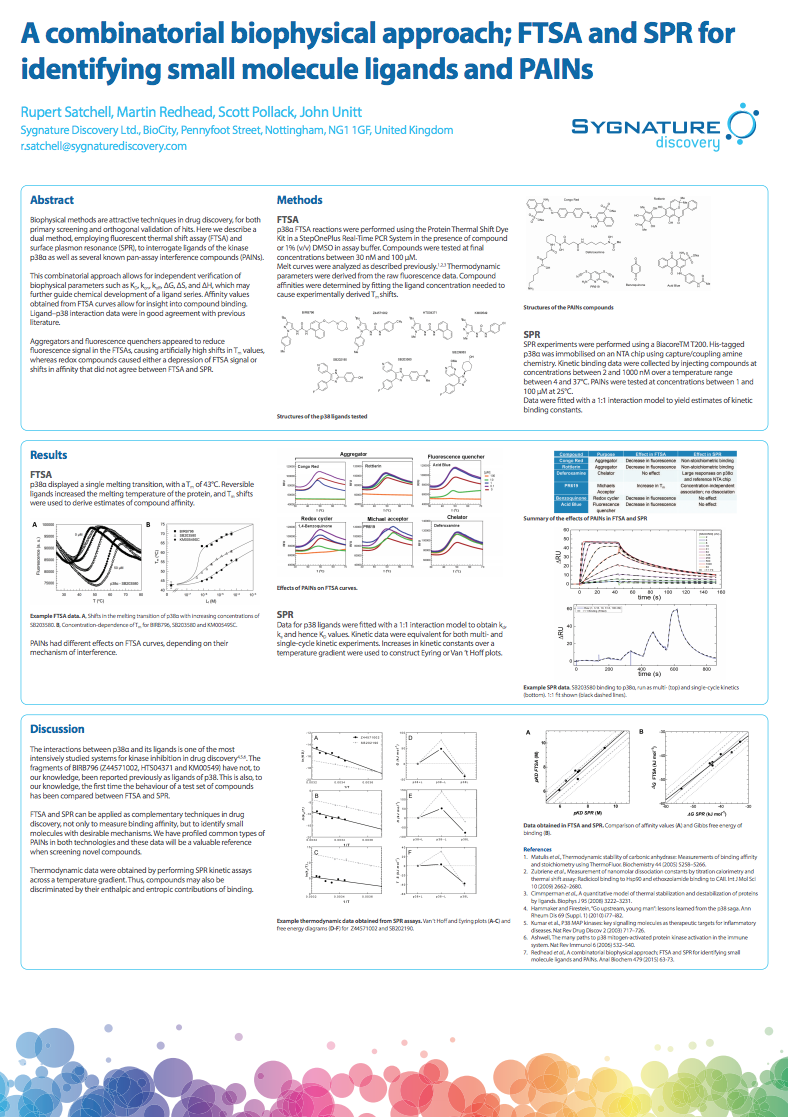FTSA and SPR for identifying small molecule ligands and PAINs
Abstract
Biophysical methods are attractive techniques in drug discovery, for both primary screening and orthogonal validation of hits. Here we describe a dual method, employing Fluorescent Thermal Shift assay (FTSA) and surface plasmon resonance (SPR), to interrogate ligands of the kinase p38α as well as several known pan-assay interference compounds (PAINs).
This combinatorial approach allows for independent verification of biophysical parameters such as KD, kon, koff, ΔG, ΔS, and ΔH, which may further guide chemical development of a ligand series. Affinity values obtained from FTSA curves allow for insight into compound binding. Ligand–p38 interaction data were in good agreement with previous literature. Aggregators and Fluorescence quenchers appeared to reduce Fluorescence signal in the FTSAs, causing artificially high shifts in Tm values, whereas redox compounds caused either a depression of FTSA signal or
shifts in affinity that did not agree between FTSA and SPR.

